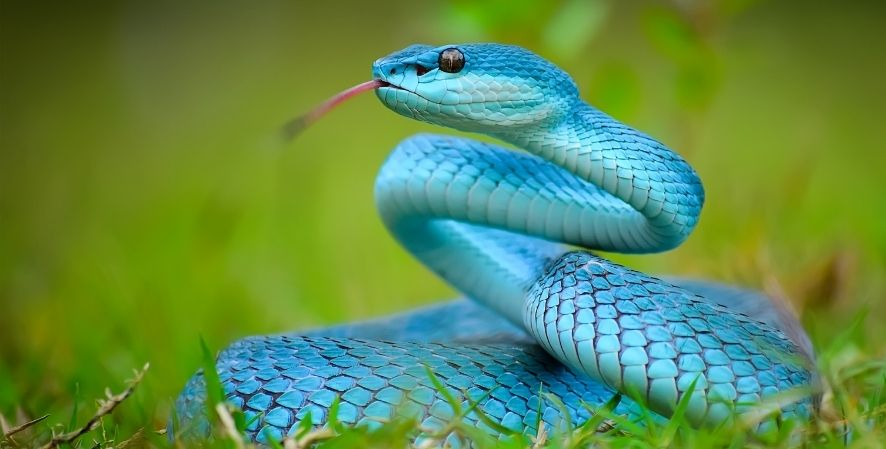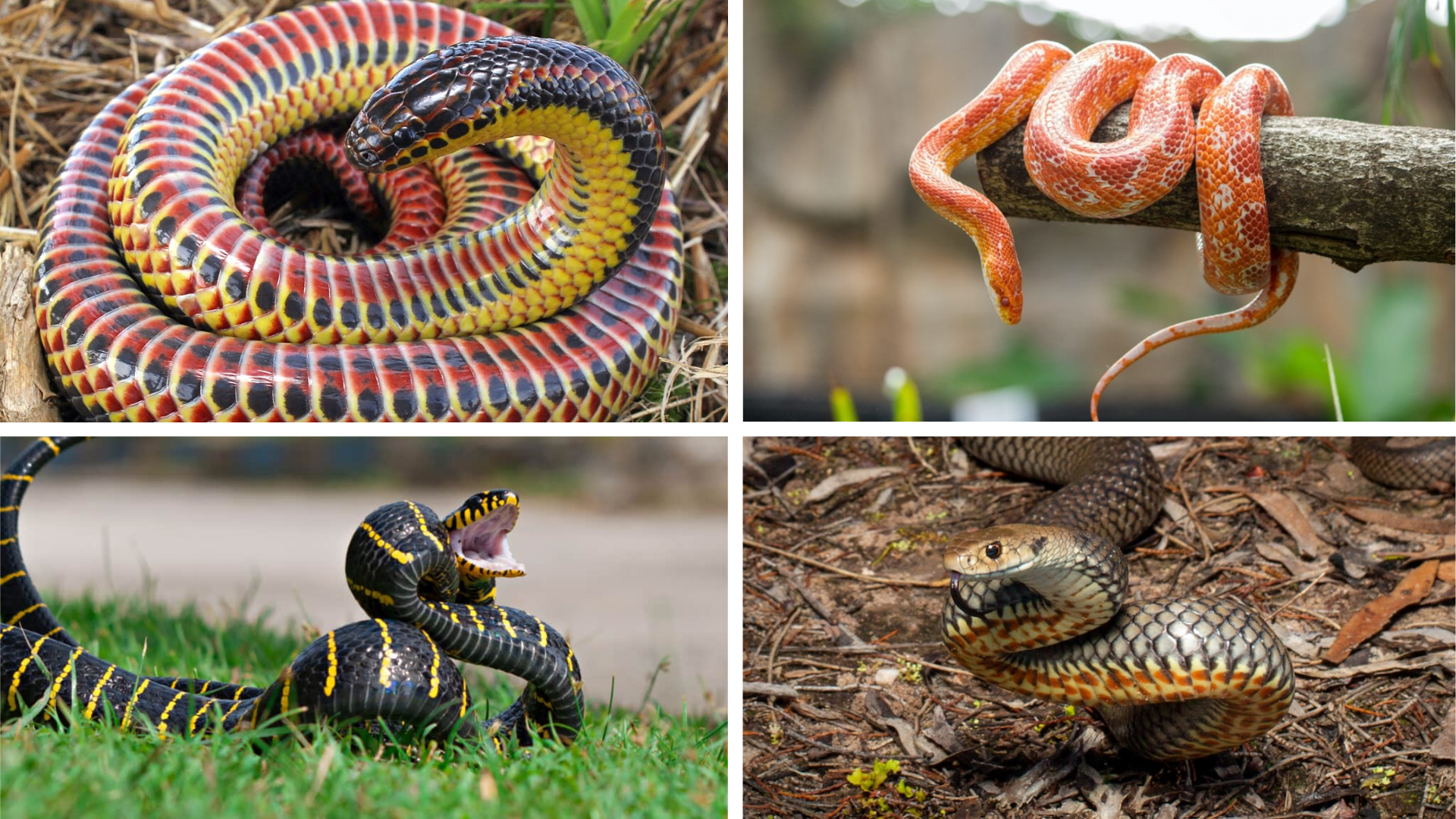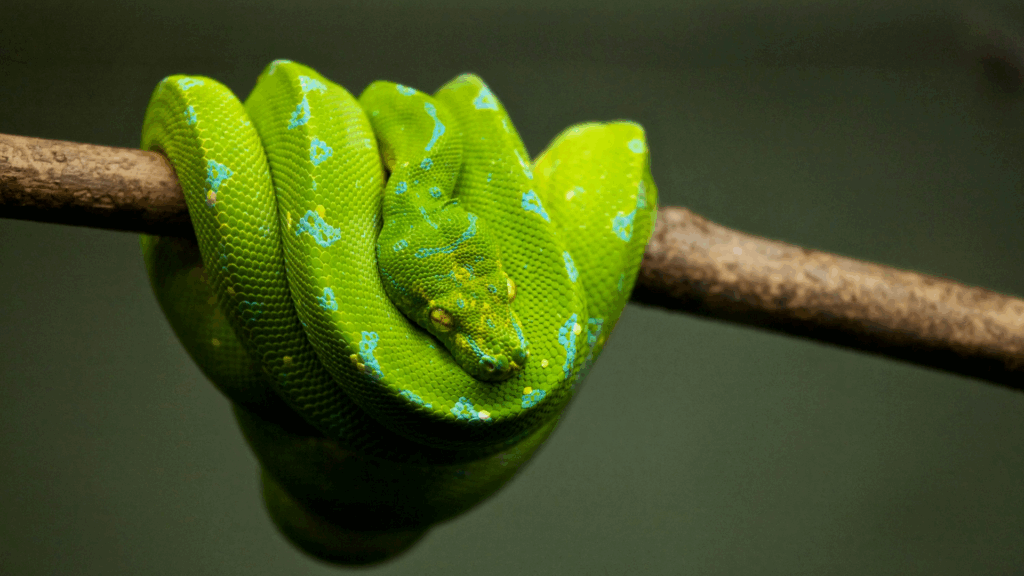Snakes often get a bad rap. Most people jump or freeze when they see one slithering near them. It’s a common reaction, fear mixed with interest.
These scaled creatures have sparked myths, legends, and phobias across all cultures for thousands of years.
This blog will show you the truly mind-blowing side of snakes that goes beyond the usual fears. You’ll learn facts that might change how you think about these animals or make you even more wary of them!
Get ready to learn shocking facts about snakes that are so strange and startling, they’ll make your skin crawl.
From odd eating habits to bizarre physical abilities, these tidbits will give you plenty to think about next time you spot a snake.
Everything You Need to Know About Snakes

Snakes exist in almost every part of our world, from hot deserts to cool forests and even oceans. These limbless reptiles have bodies built for hunting and survival.
They move by flexing their muscles against the ground, pushing forward in a smooth motion. Most snakes eat small animals like mice, frogs, or birds, which they catch by striking quickly.
Some snakes kill with venom, while others squeeze their prey. Snake skins come in many colors and patterns that help them hide from both hunters and the animals they hunt.
They shed this skin several times a year as they grow. Snakes use their forked tongues to smell the air, picking up tiny scent particles.
Though many people fear them, snakes play key roles in nature by controlling rodent numbers. Of the 3,000+ snake types worldwide, only about 600 have venom that can harm humans, and most snakes would rather slip away than fight.
Shocking Snake Facts That Challenge Common Beliefs

Slithering silently through grass or coiled under rocks, snakes have struck fear into humans since ancient times. These mysterious creatures, with their cold stares and flicking tongues, hold secrets that few of us know.
Beyond the myths and scary stories, the truth about snakes can be even more startling. The following are shocking facts about snakes that everyone should know:
1. Some Snakes Can Live Up To 30 Years
Wild snakes typically live 10-15 years. However, in captivity with proper care, many species can survive much longer. Ball pythons often reach 30 years, while some boas have lived past 40! The record is held by a ball python that reached 47 years in captivity.
2. Snakes Have No External Ears
Snakes lack external ear openings and middle ears. Instead, they sense vibrations through their jawbones and inner ears. This special adaptation lets them detect movement through the ground. They can feel your footsteps before they see you coming!
3. Some Snakes Can Go A Year Without Eating
Large snakes like pythons and anacondas can fast for incredible periods after big meals. Their metabolism slows down dramatically. Research shows some can exist up to a year without food when necessary, burning stored fat very slowly.
4. A Snake’s Heart Can Move Around Its Body
Snake hearts can shift position during large meals. When a python swallows prey bigger than its head, its organs must make room. The heart can move several inches and change shape while still pumping blood throughout the long digestive process.
5. Snakes Used To Have Legs
Fossil evidence confirms that snakes evolved from lizards with legs. Ancient snake species like Najash rionegrina had small hind limbs. Over millions of years, these limbs became smaller until most modern snakes lost them completely. Some pythons still have tiny vestigial spurs.
6. The King Cobra Builds Nests
King cobras are the only snakes that build nests. Females gather leaves and vegetation, creating mounds up to three feet high. They guard these nests for 60-90 days, making them uniquely maternal among snake species.
7. Snakes Smell With Their Tongues
That famous flickering tongue helps snakes smell their world. The forked tip picks up scent particles from the air, which are transferred to the Jacobson’s organ in the roof of the mouth. This specialized system gives them a detailed 3D “scent map.”
8. Flying Snakes Exist
Paradise tree snakes don’t truly fly but can glide impressive distances. By flattening their bodies and making S-shaped movements mid-air, they can travel over 300 feet from tree to tree. They’re found in Southeast Asian rainforests.
9. Some Snakes Reproduce Without Males
Certain snake species demonstrate parthenogenesis virgin birth. Female water snakes, copperheads, and some pythons can produce offspring without mating. Their eggs develop without fertilization, resulting in clones of the mother. This happens more often in captivity.
10. The Inland Taipan’s Venom Can Kill 100 People
Australia’s inland taipan has the most toxic venom of any land snake. A single bite contains enough venom to kill about 100 adult humans. Despite this, there are no confirmed human deaths; they live in remote areas and avoid people.
11. Snakes Don’t Dislocate Their Jaws
Contrary to popular belief, snakes don’t dislocate their jaws to eat large prey. Instead, they have incredibly flexible ligaments connecting their jawbones. This flexibility, plus a unique jaw structure with extra bones, allows them to stretch their mouths around surprisingly large meals.
12. Some Snakes Can Play Dead
Eastern hognose snakes put on dramatic acts when threatened. They flip onto their backs, hang their tongues out, and emit foul smells. They may remain “dead” for minutes or hours until danger passes. If flipped right-side up, they’ll roll back over to maintain the deception!
13. Snakes Have Hundreds Of Ribs
Humans have 24 ribs, but snakes can have 200-400 pairs, depending on length and species. Each vertebra connects to a pair of ribs, creating their distinctive tubular shape. This extensive ribcage protects while allowing extreme flexibility for movement and digestion.
14. Snake Venom Is Used In Life-Saving Medicines
Snake venom components help create medications for heart attacks, strokes, and high blood pressure. Drugs like Captopril (from pit vipers) and Tirofiban (from saw-scaled vipers) save millions of lives. Researchers constantly study new medical applications for snake toxins.
15. The Reticulated Python Can Exceed 30 Feet
The longest snake in the world, the reticulated pythons, sometimes grow beyond 30 feet. The current record-holder measured 33 feet. These massive snakes can weigh over 300 pounds. Found in Southeast Asia, they’re powerful enough to capture and consume small deer.
16. Snakes Never Stop Growing
Unlike mammals, snakes continue growing throughout their lives, though growth slows with age. This “indeterminate growth” explains why the oldest snakes are often the largest. Environmental factors like food availability and temperature influence how big they get.
17. Some Snakes Have Two Heads
Two-headed snakes result from incomplete embryo division. These rare specimens have two fully functioning heads, each with its brain, connected to one body. They often struggle to survive in the wild due to coordination problems when hunting or escaping predators.
18. Snakes Can Detect Infrared Radiation
Pit vipers, pythons, and boas have special heat-sensing organs. These “pit organs” detect infrared radiation, letting them find warm-blooded prey even in complete darkness. They can sense temperature differences as small as 0.003°C from up to three feet away.
19. A Snake’s Spine Has Up to 400 Vertebrae
Human spines contain 33 vertebrae, but snakes have hundreds. The record-holder is the python with approximately 400 vertebrae. This abundance of joints creates their remarkable flexibility, allowing them to coil, climb, and strike with incredible precision.
20. Snakes Have Transparent Eyelids
Snakes don’t blink because their eyes are covered by transparent scales called “spectacles.” These fixed, clear eyelids protect their eyes while allowing vision. These scales are shed with the rest of the skin, sometimes appearing milky before shedding.
21. The Fastest Snake Moves at 12 MPH
The black mamba can travel at speeds up to 12 miles per hour across short distances. This African snake is not only fast but highly venomous. Its speed helps it catch prey and escape threats, making it one of the most feared snakes on the continent.
22. Some Snakes Change Color
Certain snake species can alter their coloration over time. The rhinoceros viper can shift between patterns and brightness levels depending on age, habitat, and season. Arabian sand boas change color with temperature, appearing darker when cold and lighter when warm.
23. Sea Snakes Can Hold Their Breath for Hours
Yellow-bellied sea snakes can remain underwater for up to three hours between breaths. Their specialized lung extends almost the entire length of their body. They can also absorb oxygen through their skin while underwater, further extending dive times.
24. Snake Tongues Collect Data, Not Food
Snake tongues never help with eating. Their sole purpose is gathering chemical information from the environment. The split design collects scent particles from different directions simultaneously, helping snakes create a 3D chemical map of their surroundings.
25. The Titanoboa Was Bigger Than a Bus
This prehistoric snake lived 60 million years ago and grew to 42 feet long with a weight of 2,500 pounds. Larger than any modern snake, it could have crushed and eaten crocodiles. Climate change likely contributed to the extinction of these massive predators.
26. Some Snakes Eat Other Snakes
King snakes earn their name by regularly eating other snakes, including venomous ones. They’re immune to viper venom and can overpower cobras. The king cobra also preys primarily on other snakes, sometimes including others of its species.
27. Baby Snakes Are Often More Dangerous
Young venomous snakes sometimes lack control over venom release, injecting full loads with each bite. Adult snakes can regulate venom use, often delivering “dry bites” without venom. Additionally, baby rattlesnakes can’t rattle yet, giving no warning before striking.
28. Snakes Don’t Drink Through Their Mouths
Most snakes drink through skin folds on their lower jaw in a process called capillary action. When submerged in water, these micro-channels fill with liquid that gets pulled into the mouth. They can absorb significant amounts of water very quickly this way.
29. Some Snake Species Care For Their Young
Not all snakes abandon their eggs. African rock pythons guard their eggs and newly hatched babies. King cobras stay with their nests for months. Some vipers give birth to live young and protect them for days or weeks afterward.
30. Snake Venom Is Modified Saliva
Snake venom evolved from regular saliva through genetic changes. Proteins in saliva gradually became more toxic over millions of years. Even non-venomous snakes have some toxin-producing genes, suggesting all snakes share ancestors with primitive venom systems.
31. Snakes Can Track Prey For Miles
Some constrictors follow scent trails for astonishing distances. Studies show reticulated pythons can track specific prey animals for up to five miles through complex environments. Their scent memory lets them distinguish individual animals from others of the same species.
32. A Single Snake Can Lay 100 Eggs
African rock pythons sometimes lay over 100 eggs in a single clutch. The record belongs to a reticulated python that produced 124 eggs at once. Maintaining and developing so many eggs requires enormous energy reserves from the mother.
33. Snakes Have Existed For 100 Million Years
Snake fossils date back to the Cretaceous period, around 100 million years ago. They survived the mass extinction that killed the dinosaurs and adapted to nearly every habitat except polar regions. This remarkable survival story spans millions of generations.
34. Some Snakes Glow Under UV Light
Certain pythons and boas show fluorescence under ultraviolet light. Their scales contain special proteins that absorb UV light and emit it at different wavelengths, creating a blue-green glow. Scientists think this might help with camouflage or species recognition.
35. The Sidewinder Moves Like No Other Animal
Sidewinder rattlesnakes move across desert sand using a unique motion. Only parts of their body touch the ground at once, reducing contact with hot sand. This sideways rolling locomotion allows them to travel efficiently on loose surfaces where other movement styles fail.
Wrapping It Up
Snakes continue to amaze us with their unique traits and abilities. These remarkable reptiles have found ways to thrive across the globe through clever adaptations.
Every aspect of snake biology shows nature’s creative problem-solving, from their jaw structure to their hunting methods.
While many people feel uneasy around snakes, learning about them often reduces fear. Understanding these creatures helps us see their important role in keeping ecosystems balanced.
Next time you come across information about snakes, take a moment to appreciate how these animals have mastered survival without limbs, eyelids, or external ears.
















